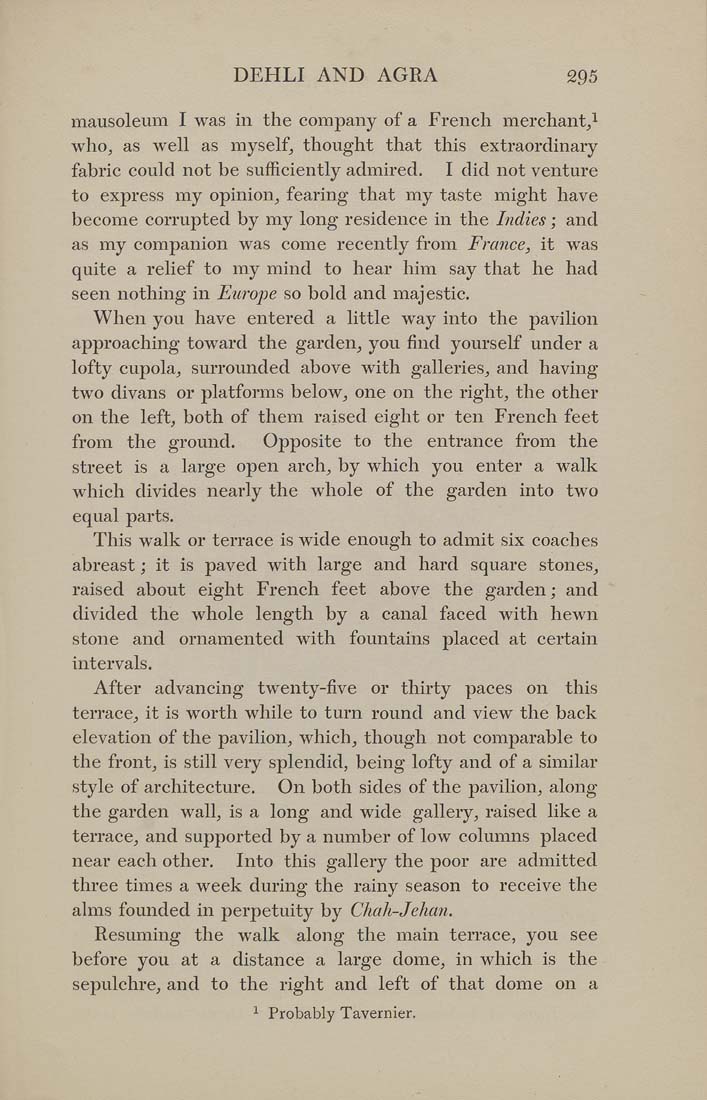DEHLI AND AGRA 295
mausoleum I was in the company of a French merchant,!
who, as well as myself, thought that this extraordinary
fabric could not be sufficiently admired. I did not venture
to express my opinion, fearing that my taste might have
become corrupted by my long residence in the Indies; and
as my companion was come recently from France, it was
quite a relief to my mind to hear him say that he had
seen nothing in Europe so bold and majestic.
When you have entered a little way into the pavilion
approaching toward the garden, you find yourself under a
lofty cupola, surrounded above with galleries, and having
two divans or platforms below, one on the right, the other
on the left, both of them raised eight or ten French feet
from the ground. Opposite to the entrance from the
street is a large open arch, by which you enter a walk
which divides nearly the whole of the garden into two
equal parts.
This walk or terrace is wide enough to admit six coaches
abreast; it is paved with large and hard square stones,
raised about eight French feet above the garden; and
divided the whole length by a canal faced with hewn
stone and ornamented with fountains placed at certain
intervals.
After advancing twenty-five or thirty paces on this
terrace, it is worth while to turn round and view the back
elevation of the pavilion, which, though not comparable to
the front, is still very splendid, being lofty and of a similar
style of architecture. On both sides of the pavilion, along
the garden wall, is a long and wide gallery, raised like a
terrace, and supported by a number of low columns placed
near each other. Into this gallery the poor are admitted
three times a week during the rainy season to receive the
alms founded in perpetuity by Chah-Jehan.
Resuming the walk along the main terrace, you see
before you at a distance a large dome, in which is the
sepulchre, and to the right and left of that dome on a
^ Probably Tavernier.
|








